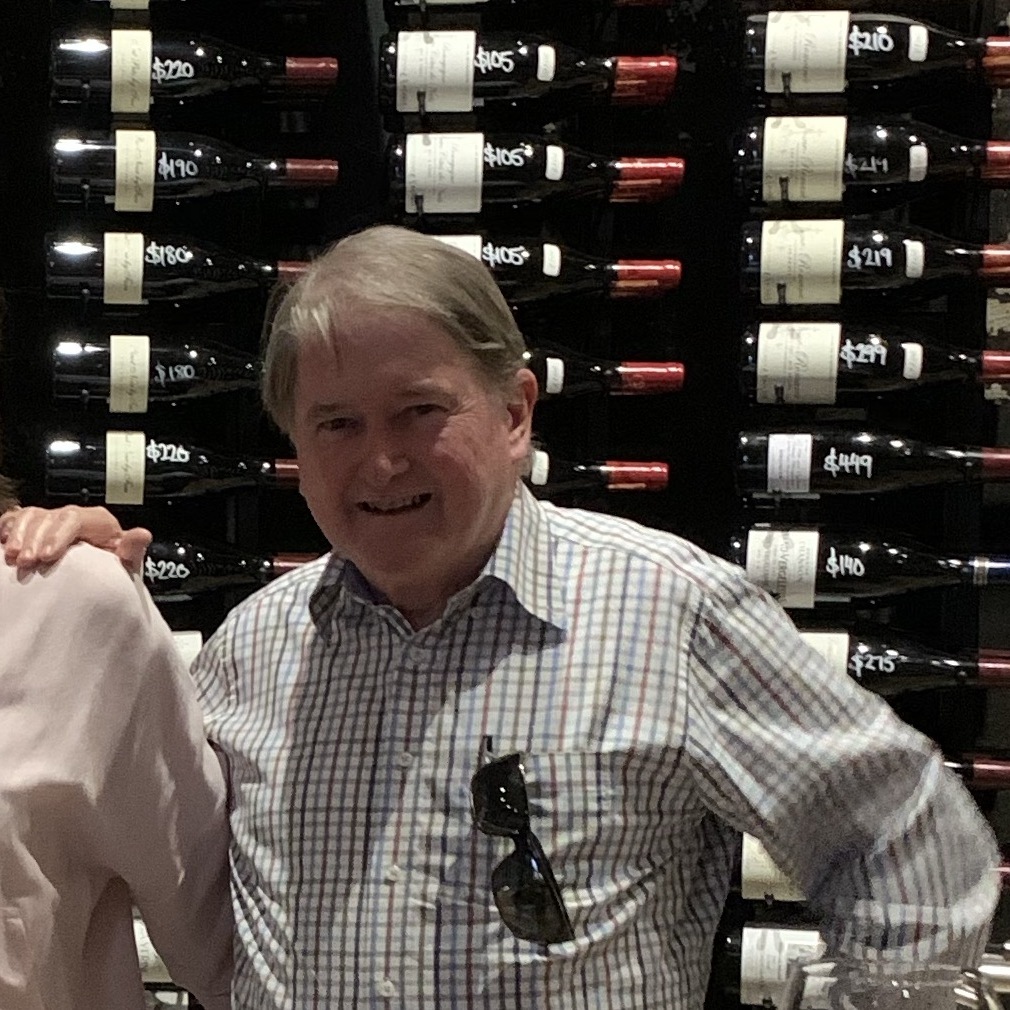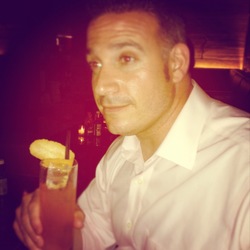3 Sisters & A Brother
Taittinger
Comtes de Champagne Grand Crus Brut Blanc de Blancs 2007
Well...this was one hell of a week. There is only one way to wind it down. Reach for an excellent bottle of vintage Champagne.
My first thoughts are how delicate this is on the palate. Further, how unbelievable it will be with another 8-10 years in bottle.
The nose shows; slightly sour lemon, the good parts of lemon Pledge, lemon meringue, white stone fruits, pineapple fresh with lots of juice, grapefruit, lime pulp, honeysuckle, soft, haunting caramel, brioche, limestone & slightly, dirty, grey volcanics, saline, sea fossils, sea spray, bread dough, vanilla, white spices-light ginger with spring flowers, mixed floral greens & lilies.
The body is light on its feet and dances on the palate. Delicacy abounds. Its soft, gorgeous mousse right there with the best money can buy. Slightly sour lemon, lemon meringue, green & with more bruised golden apple, white stone fruits, pineapple fresh with lots of juice, grapefruit, lime pulp, touch of apple cider, honeysuckle, soft, haunting caramel, ginger ale into cream soda, brioche, nougat, toffee notes, lighter nuts without skin, limestone & slightly, dirty, grey volcanics, saline, sea fossils, sea spray, bread dough, vanillin, marzipan, white spices-light ginger with spring flowers, mixed floral greens & lilies. The acidity is mellow yet lively, gorgeous and as good as it gets. The finish is all luxury. So well knitted & balanced, elegant, rich but not overpowering and gently persisting several minutes.
Photos of; The House of Taittinger, their caves so chalky white and built on the famous Crayères Cellars of Reims: 2.5 miles of tunnels (they own 1/4 to 1/3 of it) cut out of chalk by the Romans, the portrait of Thibaud IV who was a king, lord, manager, singer, conqueror, explorer & 11th century Crusader all rolled into one from which, this Cuvée was the catalyst creation and part of the 600 plus hectares they own in Champange.
Some producer notes; Taittinger's history can be traced back to 1734, when it was originally known as Forest-Fourneaux, founded by Jacques Fourneaux who worked closely with local Benedictine monks to learn how to produce wine. They were just the 3rd Champange house.
The estate was bought by the Taittingers – a family of wine merchants – in 1932, and thanks to the great depression and subsequent low land prices, the family also picked up huge swathes of vineyard. From 1945-1960, Francois Taittinger established the cellars in the Abbey of Saint-Nicaise, and after his death in 1960 his brother Claude took over, pushing the estate into a Champagne house of world renown. Such was the status of the label that the Taittinger family soon expanded its business into other luxury goods. However, this eventually led to financial difficulties, and in 2005 the Taittinger brand – including the Champagne house – was sold to the American owned Starwood Hotel Group. The sale was badly received by the Champagne industry, with many fearing the new owners – unfamiliar with the culture of Champagne – would put profit ahead of quality.
Just one year later, Claude’s nephew, Pierre-Emmanuel Taittinger, who had always been opposed to the sale, negotiated a €660m deal with the Starwood Group, and the Taittinger family resumed ownership of the company.
In 2017, Taittinger planted its first vines in England, near a village in Kent, for its venture into English sparkling wine. The first bottle will be ready in 2023.
1/8/21 — 5 years ago


Jones Family Vineyard
The Sisters Napa Valley Cabernet Sauvignon 2014
93 that is beginning to lean into 94. This 14 shows nice evolution but still needs 2-3 years before it hits the beginnings of its full stride.
This 2014 “The Sisters” is rich, lush & ruby fruits of; blackberries, dark plum that stretches into pudding, dark cherries, black raspberries, some boysenberries. Dark chocolate cake with buttercream frosting, mocha powder notes, melted, salted caramel, mid berry cola, light; clove, nutmeg, cinnamon & vanillin, dark, rich, sweet earth with dry leaves, some dry herbs, dark spice w/ some palate heat, limestone powder, dry stone, soft leather & slightly dryish tobacco, sandalwood to barrel shavings, hints of lead pencil, touch of dry stems, fresh & slightly withering flowers that are; dark, red with lavender framed in liquid violets, excellent round acidity and a very well balanced, mid structured & tensioned finish that is elegantly polished and lasts a little more than a minute.
Paired with an Allen Brother’s Filet Mignon. A good, well aged Napa Cabernet works well with a less/near no fat cut of meat.
Photos of; the Jones family, staff harvesting, tasting room and Jones vineyard. — 2 years ago
Jones Family Vineyard
Napa Valley Cabernet Sauvignon 2002
Nose has ripe plum, mashed blackberries, dark chocolate powder, strawberry jam on leather, molasses, molasses cookies, wet soil, nutmeg and vanilla bean.
Palate has blackberry compote, black cherry reduction, partially dried plum, wet baking spice, wet+dry leather, dark chocolate shavings, (light) oak/vanilla influence remains. Extended finish, really starting to pick up incredibly at 3-4H in the decanter.
Paired with Allen Bros. ribcap (USDA Prime version) tonight, unfortunately our grill has a 4ft. snow drift in front presently so the best I can muster was a super hot cast iron pan from the oven, then onto stove with lots of butter and in 7m total we had beef to die for...Which I had some competition for dining this evening.
This bottle was a very generous gift from my West Coast brother @David T from earlier in the year. My work travel schedule was hectic and never found a good time to settle in on a weekend with the wine or pairing, until now. (I've lost track of the amount of COVID tests I've done in the past 5M, but all have been negative 🙏 to date.) A fabulous gift to enjoy now that I'm hopefully relaxing for the next 2w...
Happy Holidays to everyone.🎄 — 5 years ago

Ferreira
Ferreira Porto Branco / White
My wife and I loved this one. It a birthday present from my sister and brother in law, and was our first white. Must drink it within 2-3 weeks of opening. — 7 years ago
Bodegas Numanthia
Termes Toro Tinto de Toro 2014
Termanthia’s younger brother. Monster wine. Intense. Dark plum, dark cherry, blackberry, spice, smoky and meaty, espresso notes, cocoa, black pepper. Fleshy and firm tannins, though well-integrated. Nice acidity, keeps it balanced. Looooong lasting finish. Still very young, but quite approachable. Started out a bit “tight”, but opened up beautifully after a 3-hour decant. This wine has enough backbone to last at least 15+ years. #Termes #Numanthia #Toro #Spain 🇪🇸🍷 — 7 years ago
Château Latour
Les Forts de Latour Pauillac Red Bordeaux Blend 2000
Had this in an early stage. Dark w/ lots of black licorice. Completely different wine tonight. This is what I look for by waiting on wine.
The nose shows floral, ripe, bright, slightly candied fruits of; dark cherries, blackberries, black raspberries, black plums, poached to baked strawberries, raspberries, powdery lead pencil, dark, rich forest floor w/ leaves, dark & mid spices, black licorice, mixed berry cola, cinnamon, nutmeg, vanillin, soft leather, fresh tobacco, dry, crushed limestone, river stone, dark, red, blue florals framed in violets.
The mouthfeel is gorgeous. The palate shows its relationship w/ its big brother. The length & balance are excellent. Integration is finally showing like a non stubborn 2000 or one that is finally ready. Floral, ripe, bright, slightly candied fruits of; dark cherries, blackberries, black raspberries, black plums, poached to baked strawberries, raspberries, powdery lead pencil, dark, rich forest floor w/ leaves, dark & mid spices, black licorice, mixed berry cola for days, cinnamon, nutmeg, vanillin, soft leather, fresh tobacco, dry, crushed limestone, moist grey clay, river stone, dark, red, blue florals soaked in violets. The acidity is full warm spring day. The well knitted & balanced finish stuns. Starts fruit forward, cola that fall onto earthy perfection.
Elegant, complex wine candy w/ a 3 1/2 hour decant.
Cheers to the King of steak - Allen Brothers & the King of Cabernet - Latour. — 5 years ago

Domaine Mugneret-Gibourg
Ruchottes-Chambertin Grand Cru Pinot Noir 2016
No. 8 in the 9 wine Gevrey Chambertin Grand Cru bracket tasted blind. Candied red fruits on nose and palate. The palate of Medium plus to Profound intensity. Not as impressive as most of the others in this bracket. This domaine is owned by 3 sisters and has developed somewhat of a cult following. Ruchottes being slightly higher up the slope than most of the other Grand Crus they might have suffered more frost damage. — 6 years ago
Domaine du Cayron
Gigondas Red Rhone Blend 2010
Nice and savoury with notes of dried raspberry. Barely medium bodied. A great food wine in this case Chicken with stir fried vegetables and gnocchi. A fine example of mature Gigondas made by 3 sisters. Like this Grenache dominant southern Rhone style - one of the 1001 Wines. — 7 years ago
Marcassin
Three Sisters Vineyard Pinot Noir 2007
WNH event number 3...new world Pinot. Such a treat to experience the many different variations of Pinot!
Older Marcassin pinots...what more can be said other than special. However, I think this one was quite muted on the nose and wasn’t entirely as expected. Age has leaned this out, and the red and black fruits are battling with earth and herbal components. Dirty raspberries and bay leaf on the finish. Even a slightly off bottle of Marcassin is impressive, so thanks for bringing, @David L ! — 7 years ago











UWS
20251118 Enoclub Alba with Wakano
Lovely Barbaresco, a bit light in color but nice in taste.
Not too heavy but brings a nice flavor of full body.
Not so tart and harsh as the one 2 days agon from Verduno.
The owners of the Vineyard Ca del Baio are 3 sisters, one went to school with Alessandro from Casa Ressia.
Excellent price for this wine.
€60.00 — a month ago